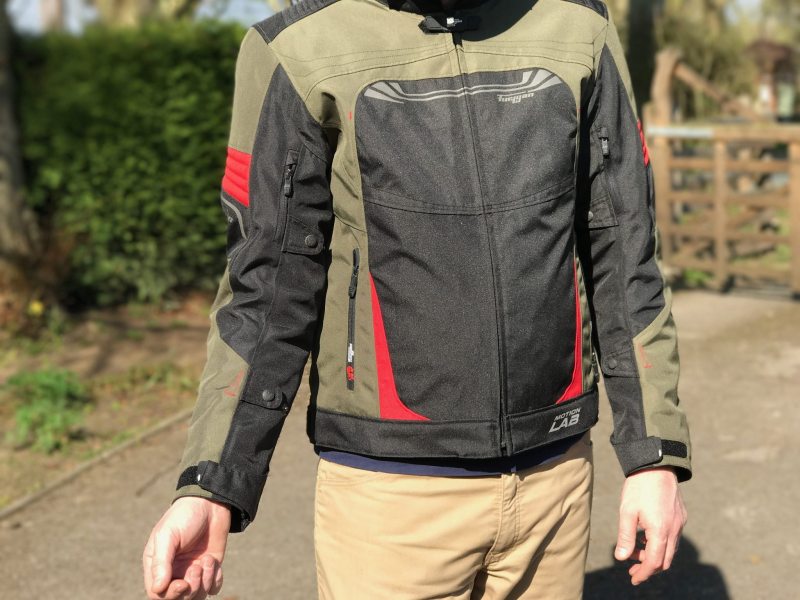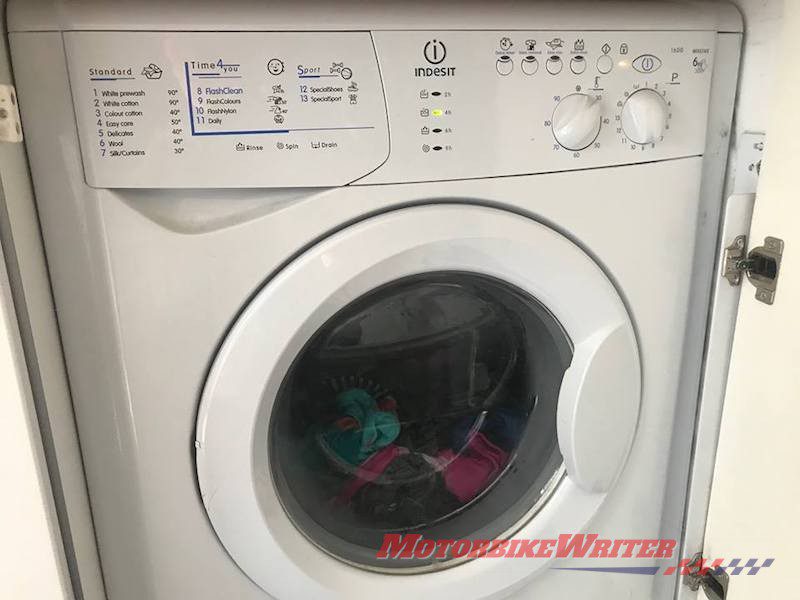Have you ever noticed that your textile riding gear is not as waterproof or breathable as it used to be and doesn’t fit as well after you’ve washed it?
That’s because some textile jackets, pants and gloves are made with material that needs to be washed in a certain method to prevent shrinking, stretching or losing its breathability or waterproofing capabilities.
Unfortunately, there is no one method for washing and drying your textile motorcycle gear as it is made from a variety of different modern materials (Cordura, Gore-Tex, D-Dry, etc), all of which have their own methods for cleaning.
Some need hand washing and some require machine washing; some need heated tumble drying and some need to be hung up.
We contacted several Australian distributors of textile riding gear and have collated their cleaning advice.
Click here to find out how to care for leather gear.
Read the label
The most important advice we can give you on maintaining your textile gear in good condition is to read the manufacturers’ instructions on the labels before you throw them in the bin.
In fact, don’t throw them in the bin. Hold on to them as you may need to refresh your memory for the various different textile jackets, pants and gloves you own.
Cleaning is a must
The other important advice is that you do have to keep your gear clean.
Some riders think washing their gear decreases its weather and abrasion resistance. They also think dirty gear gives them a certain amount of “street cred” … or “bush-bashing cred”!
However, they are doing themselves a disservice as road grime and body grease destroy the various membranes and coatings in the gear.
Some materials actually loses their waterproofing and breathing ability when they get dirty and need a certain washing and/or drying process to “reactivate” the waterproofing molecules and fibres.
Not washing your gear might also put you in some danger as it makes the safety reflective materials more difficult to see at night.
Before washing
Remove any armour from your gear before you start. Also, unzip any liners, layers or other zip-off pieces and wash them all separately.
Make sure you also check all the pockets.
Wet the material first and let it soak in plain water for about 30 minutes. This will soften the bugs and other grime so they are easier to remove.
Hand washing
Washing by hand is preferable to machine washing as the spinning action of a washing machine can damage the molecules and fibres in the material.
However, many front-loading washing machines have a different action and can replicate gentle hand washing. Check your front-loading washing machine to see if there is a cycle option for “hand wash”, “gentle wash” or something similar.
If you hand wash, use lukewarm water and don’t rub too vigorously as it can damage the fibres. Use a soft brush to clean off problem marks.
Detergents
Detergents often contain solvents and abrasives that can damage your textile riding gear. Instead, use a neutral soap. The soap packaging may display a pH rating from 1 to 14. Lower numbers are acidic and higher numbers are alkaline. Chose something around 7.
Never use fabric softener as it gums up the spaces between fibres.
Certain detergents and softeners can also affect the stretch properties of elastic, making your gear fit more loosely.
In fact, any chemicals could damage your gear, so don’t use bleach nor have your gear dry cleaned which uses solvent instead of water.
Drying
If you able to machine wash your gear, you may also be able to machine dry it if there is an option on your dryer for a gentle tumble.
Otherwise, just hang it up out of the sun or direct light in a cool, dry place where you get a bit of breeze.
If the pants or jacket have stretch panels, it is better to lie the garment flat on a dry towel to prevent stretching under the weighted load of the wet material.
Some materials actually require heat to reactivate the waterproof molecules and recommend tumble drying, using a hair dryer or even ironing the material. Check the label for specific instructions.
When the garment is dry, replace all armour and liners.
It may look rumpled, but do not iron it unless the instructions specifically state that you should.
Wearing the jacket and pants on a ride will usually take out any wrinkles.
As an additional and optional treatment, you may use a water repellent spray such as Nikwax to waterproof the outer garment. But again, check the instructions which may advise not to add any waterproofing sprays.




